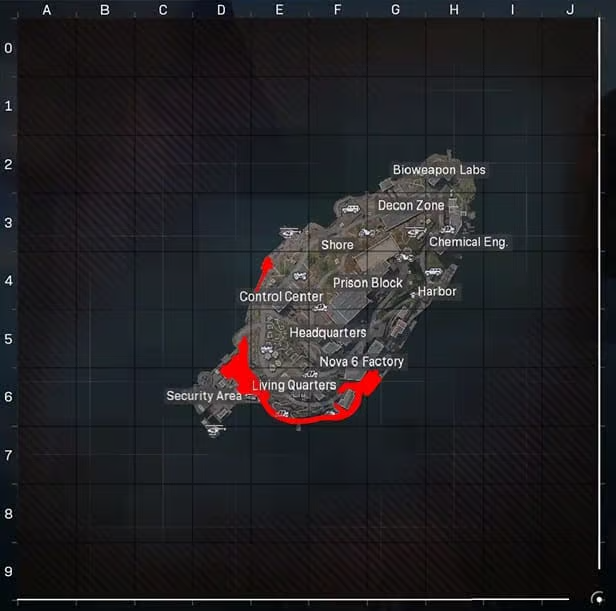



Fixing Call of Duty through Content & PR
When Call of Duty: Warzone ignored or were unaware of persistent bugs in the game, Rito took matters into his own hands—creating viral videos, crafting a narrative around them, and pitching the story directly to gaming media. The result? Earned coverage across top outlets and a series of quiet fixes by the devs. This case study is about wielding storytelling, content strategy, and Public Relations tactics to influence change in one of the world’s biggest gaming franchises.
Overview
The Challenges
- Turning Quality Assurance findings into infotaining content that can reach and resonate with non-technical general audiences.
- Compelling a multi-billion dollar game studio to become aware of and prioritize fixing issues you believe will improve the game.
Objectives
- Attract media attention
- Raise public pressure
- Catalyze bug fixes
Strategy
- Quality Assurance Testing
- Video storytelling
- Targeted journalism outreach
Results
- Top ranking gaming news outlets like ScreenRant published over a dozen articles and syndications about Rito's documented bugs
- Game studio developers for Call of Duty: Warzone corrected 3 separate publicized issues
Roles by Rito
Content Strategist
Producer
Video Editor
Game Tester
Quality Assurance Engineer
Publicist
Media Personality
Musical Performer
Earned Coverage From









The Process
Rito's strategy was a multi-stage process designed to identify, document, and publicize critical game bugs when internal channels were ineffective. It combined the technical discipline of quality assurance, the creative execution of compelling content creation, and the strategic deployment of public relations tactics to generate external pressure and drive developer action.
Quality Assurance Testing
Rito approached the project with the discipline of an internal Quality Assurance team. Drawing from his previous experience performing quality assurance for a game studio, and years of structured testing in web and application development, he created a Jira-based system to track and categorize gameplay bugs he encounters. Each issue was evaluated across two dimensions: its technical severity, and its potential editorial relevance to gaming media.
For the most promising bugs, Rito conducted methodical, repeatable testing to isolate triggers, verify consistency, and define the scope of impact—without any access to the game’s internal systems. Each bug was thoroughly documented and organized to meet the standards of a production QA pipeline, including reproducibility, severity labeling, and contextual commentary.
But Rito wasn’t part of the development team. He couldn’t patch code, submit directly to official systems, or escalate through internal channels. And in a community where thousands of bugs are reported every week, even severe issues often vanish into the noise.
What he could do was prove the bugs existed—with structure, clarity, and precision. The next step was to make sure they couldn’t be ignored. That meant turning these findings into compelling, high-signal video content that would cut through the chaos—and get the right people watching.
Infotaining Content Creation
With the bug testing complete, Rito moved into production—transforming raw QA data into compelling video assets designed for both technical credibility and public engagement. Using OBS Studio to capture in-game footage, he documented each bug in real-time, ensuring clear, repeatable visual evidence of how the issues manifested during gameplay.
He then edited the content in Adobe Premiere, applying a high-production polish that made the footage digestible and engaging for broader audiences. But the creative direction didn’t stop at clean cuts and bug overlays—Rito brought his multimedia alter ego, Rito Rhymes, into the mix. For one of the videos, he wrote and recorded an original rap, using music and lyricism to explain the bug’s mechanics while keeping the tone playful, sharp, and entertaining.

Publish Video
Behind the creativity was a tactical understanding: to get media outlets to share the story, the content couldn’t just be informative—it had to attract viewership. Rito balanced the dry technical precision required to prove the existence of the bug with curiosity-driven framing and punchy delivery that made each video shareable. The result was a series of assets that not only showcased the problem but gave gaming journalists a reason to amplify it.
Strategic PR Outreach
With the content assets finalized, Rito deployed the video to a public platform with deliberate framing—optimizing the title, description, and presentation to align with journalistic angles and audience expectations. From there, he initiated direct outreach to key media contacts through a highly targeted cold-email campaign.

Sending Pitch


(Maybe) they review it then write story

They publish article
Devs fix publicized bugs
Rito independently conducted all outreach strategy and execution. This included researching relevant gaming outlets, identifying individual journalists based on prior coverage patterns, and sourcing contact information even when not readily available. Each pitch was customized to reflect the journalist’s editorial tone and interests, positioning the video as a compelling story with broader relevance.
Responses varied. Some journalists replied directly, others published without notice, and syndication quickly followed as initial coverage triggered a ripple effect across the gaming media ecosystem. The result was an organically expanding press cycle driven entirely by strategic content positioning and proactive media engagement.
Case I
Vanishing Riot Shield

Among the most widely shared pieces from the campaign was Rito’s investigation into a persistent and highly specific Warzone glitch: a bug causing Riot Shields to disappear when players were downed inside vehicles and then revived. The issue had been reported in fragments across community channels for over a year, but no one had tied the pieces together—until now.
To accurately demonstrate the bug’s activation conditions, Rito recruited an additional player to assist with live testing scenarios. The glitch required precise steps involving passenger seating, knockdowns, revives, and inventory interactions—making it a coordinated two-person QA effort. Rito documented every variation through detailed in-game captures, ensuring clarity around when and how the bug could be reliably triggered.
Once captured, the footage was transformed into a tightly edited, infotainment-style video using Adobe Premiere. But this time, Rito introduced a creative twist: performing and recording a custom rap under his multimedia persona Rito Rhymes. The lyrics wove together technical breakdowns and comedic flair, making the video both shareable and technically credible—a rare blend.
The campaign paid off. The video was featured in a write-up by Screen Rant, one of the largest entertainment and gaming outlets in the world, which praised the video’s originality and depth. Other outlets followed, citing the bug’s persistence and the utility of Rito’s workaround, further amplifying the visibility of the issue.
“The rap video, which features Rito Rhymes’ spoken-word rap over footage of the glitch in question, offers a unique yet accurate exploration of the glitch and how much it can impact players.”
— Screen Rant
For a bug that had gone largely unnoticed by the developer and ignored by official patch notes, this was the turning point—escalating a niche gameplay flaw into a widely recognized design failure, and giving players a workaround while the studio scrambled to catch up.
Case II
Self-Destructing Choppers

In another widely-circulated campaign, Rito uncovered and elevated a bizarre Warzone bug that caused helicopters to explode instantly when landing in specific zones on Rebirth Island—without taking any visible damage or enemy fire. The glitch had game-breaking implications for players relying on air mobility, but instead of documenting it in a dry, technical manner, Rito chose a dramatically different route.
To make the bug unforgettable, he created a satirical video set to the energetic overture of La Traviata. Using a blend of humor, classical flair, and sharp timing, the video showcased a series of chaotic helicopter explosions across multiple landing zones—each more absurd and unpredictable than the last. What made the piece truly infotaining, however, was Rito’s commitment to detail: extensively mapping out the “death zones” on Rebirth Island and marking the exact areas where landings would trigger the glitch.

The content struck a balance between entertainment and utility—delivering a laugh while providing real strategic insight for players trying to avoid instant death. The opera, the carnage, and the unexpected comedic framing caught the attention of several gaming outlets, including GameRant, which featured the video in a detailed breakdown of the issue.
“YouTuber Rito Rhymes showed a montage of several unfair deaths... the combination of the song and exploding helicopters makes for an entertaining clip.”
— GameRant
Beyond the laugh, the video created pressure. Players began sharing it to warn each other. Comment threads filled with anecdotes of similar experiences. What began as a mysterious, unlisted glitch quickly became a known hazard—because Rito turned chaos into culture.
Case III
Snoop Dogg's Vanishing Head

During Warzone Pacific Season 3, Rito uncovered a bug that caused the "Snoop Dogg" character skin’s head to disappear entirely when using a specific weapon configuration. Though players could still land headshots, the missing visual dramatically reduced visibility—giving users of the skin a clear gameplay advantage.
Rito published the clip directly to the Warzone subreddit under the name ritorhymes, demonstrating how equipping the Akimbo Top Break pistols would trigger the visual glitch, with the head reappearing only when switching to a shield. The post was framed for clarity and viral potential, showing the bug in action without overexplaining—allowing it to speak for itself.
The video was picked up by multiple gaming news outlets, including Dexerto, which featured the clip and broke down its competitive implications:
“Reddit user ‘ritorhymes’ highlighted this glitch in the Warzone Pacific subreddit, and the clip they posted showed the Snoop Dog Operator’s head disappearing after equipping the Top Break Pistol.” — Dexerto
This entry in the campaign demonstrated that not all coverage needs extensive production—just smart timing, platform fluency, and a sharp eye for which glitches would resonate with both players and the press. Even without a soundtrack or cinematic overlay, Rito turned a small moment into a media-worthy artifact by being first, clear, and undeniable.
BONUS | Case IV
Beating a Cheater

While this campaign didn’t expose a specific bug, it showcased another major vulnerability in Warzone’s ecosystem: the prevalence of cheating. In a match on Rebirth Resurgence, Rito and his squad encountered a hacker wielding a full suite of cheats—wallhacks, aim assist, and movement enhancements—systematically eliminating the entire team in the final circle.
What followed was a one-on-one confrontation between a fully kitted cheater and Rito, armed only with a riot shield, gas grenades, thermite, and his tactical wits. Instead of giving up or glitching out, Rito engaged strategically—baiting reloads, blocking shots, applying pressure with tacticals, and finally downing the hacker. Before the finishing blow could land, the hacker rage-quit.
Rito shared the clip to Reddit under the ritorhymes handle and followed up with tactical commentary in an email to Dexerto, which published a full article on the encounter. His advice offered players a real toolkit to counteract cheaters in high-pressure endgame scenarios—using patience, timing, and specific loadout mechanics to turn the tide.
“Use the Amped perk to minimize the time your shield is lowered and vulnerable… Thermites are one of the quickest lethals you can throw... If they continuously fire at your shield, try to catch them on the reload.”
— Rito to Dexerto
While this wasn’t traditional QA or media pressure, it was a strong signal that creative, player-driven resilience could offer value even in environments compromised by exploits. Rito turned a hacked lobby into a teachable moment and a media moment—both at once.
Conclusion

This project wasn’t just about documenting bugs—it was about generating visibility and public pressure inside a multi-billion dollar franchise largely insulated from outside voices. Rito combined the rigor of a QA engineer, the instincts of a growth strategist, and the delivery of a content creator to break through the noise and inject overlooked issues into the public conversation around one of the world’s most-watched games.
With no access to internal teams or official channels, he built a full-stack strategy from scratch—cataloging bugs, designing test protocols, producing infotaining videos, and engineering a media ripple that turned overlooked issues into public stories.
This wasn’t a stunt. It was a playbook: take something broken, package it with precision, and make the internet care. For organizations looking to drive visibility, user engagement, or narrative control in noisy environments, this case study is proof that the right mix of structure and storytelling can shift outcomes—no matter how big the system.
To get RitoVision on your project, please inquire below, or learn more about his notable press coverage







